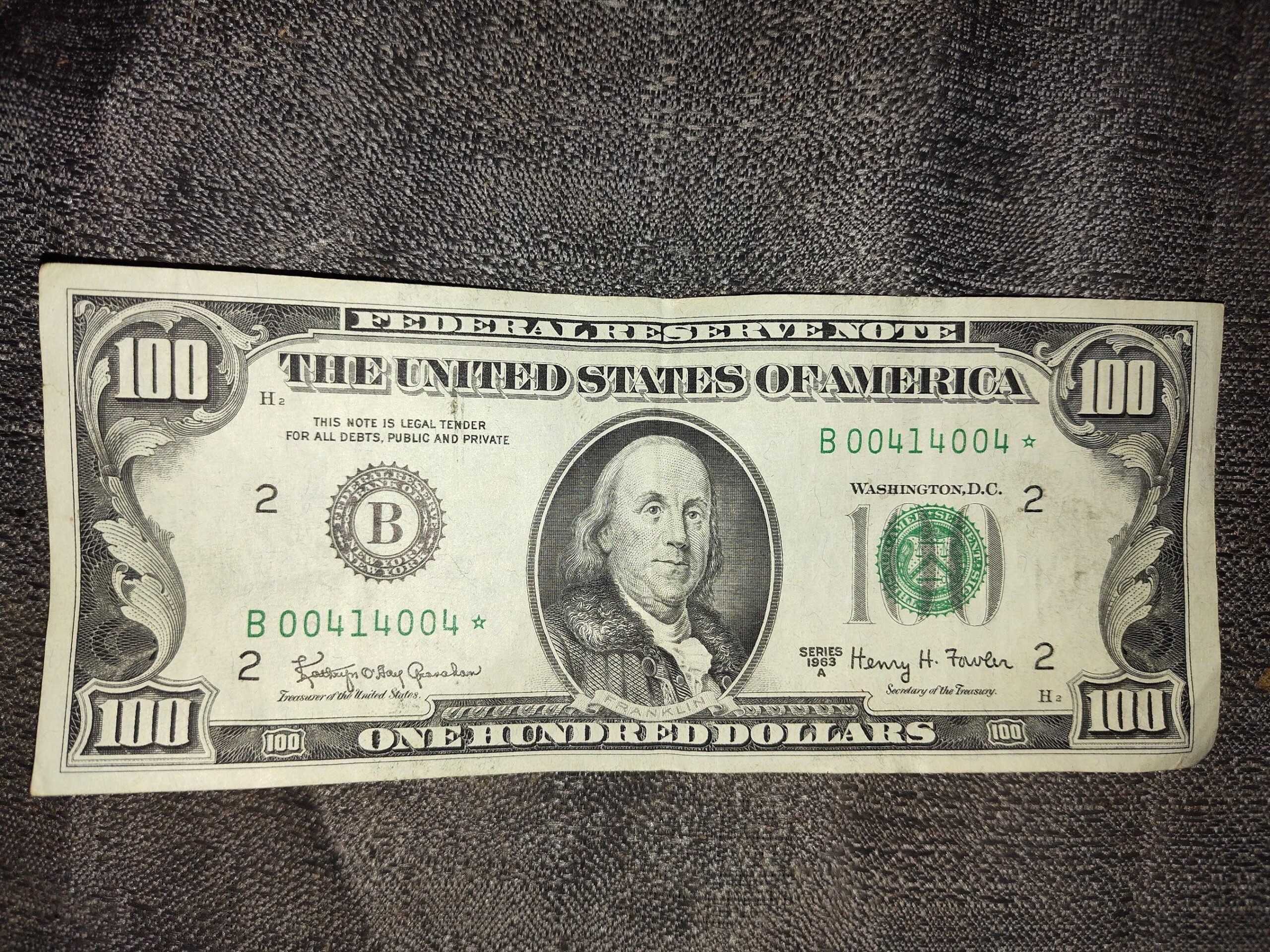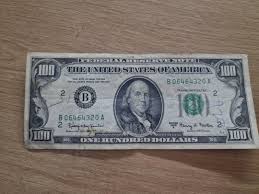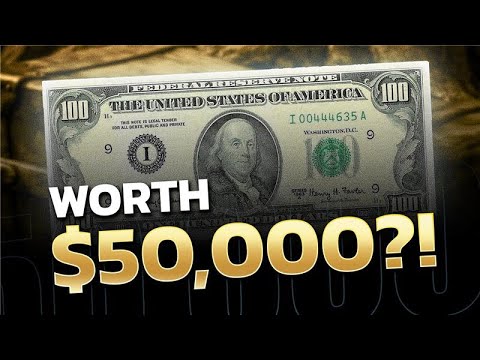When discussing the 1963 $100 bill value, collectors and enthusiasts alike often wonder about its worth and the factors influencing it. Most 1963 one hundred dollar bills, especially those in circulated condition, are not worth much more than their face value. However, there are specific conditions under which these bills can command a premium.
The value of a 1963 100 dollar bill is largely determined by factors such as the series, condition, and whether the bill is a star note or an error note.

In this article, we will explore the key elements that affect the value of the 1963 $100 bill, focusing on its specifications, its value in different conditions, and how rare star notes and errors play a role in increasing its worth.
We will also compare its purchasing power from 1963 to today to give you a clearer understanding of its historical value.
Specifications Of The 1963 100 Dollar Bill
Before we delve into the value of the 1963 $100 bill, it’s essential to understand its specifications. The 1963 $100 bill is part of the Federal Reserve Note series, and it features a portrait of Benjamin Franklin, a figure synonymous with American history.
The series issued in 1963 is often referred to as the “1963A series,” which is important for collectors because it identifies the bill’s specific release year.
One of the notable features of the 1963 $100 bill is the inclusion of the motto “IN GOD WE TRUST” on the reverse side, positioned above Independence Hall. This addition to the design made the 1963 bills stand out from earlier versions, making them more appealing to collectors and historians alike.
Condition and Its Impact on 1963 100 Dollar Bill Value
When considering the value of the 1963 $100 bill, the condition of the bill is one of the most important factors. A well-preserved bill, particularly one that has never been in circulation, is far more valuable than a worn or heavily circulated note.
In general, the 1963 $100 bill, also known as the one hundred dollar bill, will be worth its face value of $100 if it is in circulated condition. However, when the bill is in uncirculated condition—meaning it has no signs of wear, creases, or folds—it can command a higher price.
Specifically, a 1963A series $100 bill in uncirculated condition with a grade of MS 63 is worth approximately $200.
The value increases significantly for bills that are in pristine condition, with a grade of MS 65 or higher. These notes may fetch even higher prices, depending on the specific market conditions at the time.
Star Notes and Their Increased Value
One key aspect that greatly impacts the value of the 1963 $100 bill is the presence of a “star note.” Star notes are replacement bills that the United States Federal Reserve printed to replace defective bills that were damaged during the production process.
Star notes are easily identifiable because they feature a star symbol at the end of the serial number, distinguishing them from regular bills. These notes are rarer than standard ones, which makes them more valuable to collectors.

If you happen to own a 1963A series $100 star note, you can expect it to be worth around $350 in uncirculated condition with a grade of MS 63. The rarity of these star notes is one of the main reasons why they can fetch such premium prices.
It’s also worth noting that star notes are often in demand among those who focus on collecting bills with unique serial numbers or rare features.
As a result, the 1963 $100 star note is an excellent investment opportunity for collectors looking to expand their collections.
Error Notes and Their Impact on Value
Another factor that can impact the value of the 1963 $100 bill is the presence of an error. Error notes are bills that were printed with mistakes during the manufacturing process. These errors can range from misprints and off-center prints to inverted serial numbers or unusual ink blots.
Error notes are relatively rare, and their value can be significantly higher than regular bills, especially if the error is particularly unique or noticeable.
For instance, an error note with a misaligned print can make the bill far more desirable to collectors, as such notes are often one-of-a-kind.
While it is difficult to predict the exact value of an error note, it is not uncommon for these bills to sell for hundreds or even thousands of dollars, depending on the severity and uniqueness of the error.
How Much Was $100 Worth in 1963?
To understand the true value of the 1963 $100 bill, it’s important to consider its purchasing power at the time it was issued. In 1963, $100 had much more purchasing power than it does today, as inflation has significantly impacted the value of money over the past several decades.
For example, £100 in 1963 would be worth £2,676.07 today, reflecting a 26.76 times increase in average prices since 1963, according to the Office for National Statistics composite price index.
This gives you a rough idea of how much inflation has affected the value of money over the years.
So, while a 1963 $100 bill may not be worth much more than its face value in today’s market, its value in the past was significantly higher in terms of purchasing power.
The Grading System: The Value of 1963 100 Dollar Bills
The value of the 1963 $100 bill is also heavily influenced by the bill’s grade. The grading system helps collectors and buyers assess the condition of a note, and it’s essential for determining how much a bill is worth.
The most common grading scale used for paper money is the PCGS (Professional Coin Grading Service) scale, which ranges from Poor (P-1) to Perfect Uncirculated (MS 70). For a 1963 $100 bill to be considered in top condition, it must be graded at least MS 63 or higher.
A bill that has a grade of MS 63 will typically still have its original crispness and be well-centered, without signs of damage or wear.
Bills that are in higher grades, such as MS 65 or MS 67, will be more valuable due to their superior condition. However, even if a bill is in excellent condition, it may not command a high price if it is a common note without any unique features like a star note or error.
Conclusion
The 1963 $100 bill’s value can vary significantly depending on several factors, including its series, condition, and whether it is a star note or error note. Most 1963 one hundred dollar bills in circulated condition are worth no more than their face value, bills in uncirculated condition or with unique features can command premium prices.
Own a 1963A series $100 bill in pristine condition, it could be worth around $200. However, a star note from the same series could be worth as much as $350 in uncirculated condition.
Additionally, error notes can fetch even higher prices depending on the severity of the printing mistake.
The 1963 100 dollar bill value is more than just about the face value—it reflects the fascinating world of currency collection, where history and rarity come together to shape the worth of these iconic pieces of American money.

